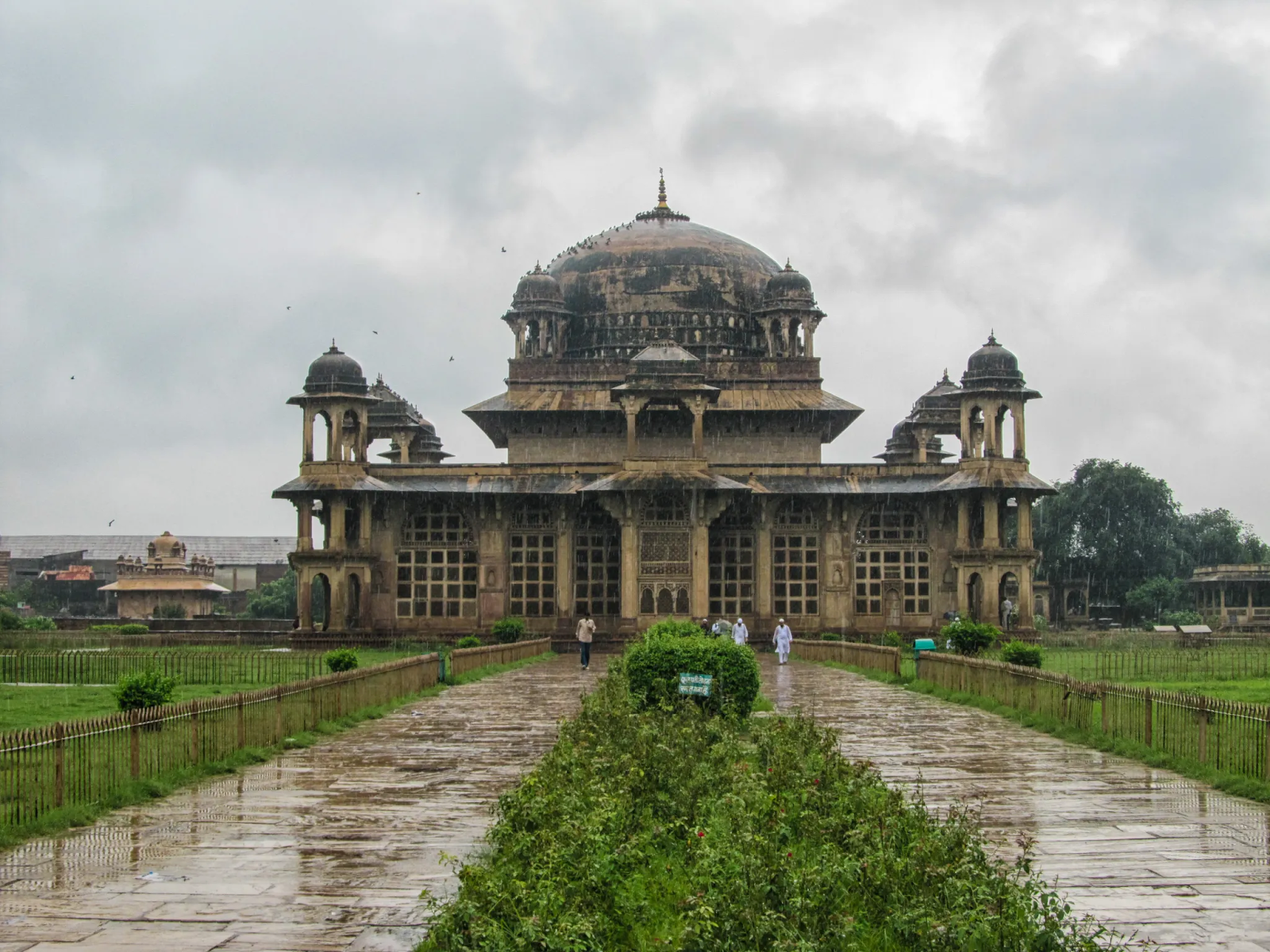Font size:
Print
Tomb of Sheikh Muhammad Ghaus
Context: In a significant ruling last week, the Madhya Pradesh High Court rejected a plea to allow religious and cultural practices at the tomb of Sufi saint Hazrat Sheikh Muhammad Ghaus in Gwalior.

About the Tomb
- Overview: The Tomb of Sheikh Muhammad Ghaus is a significant historical and architectural landmark located in Gwalior, Madhya Pradesh, India.
- Built after the saint’s death in 1563, the mausoleum stands as a prime example of early Mughal architecture and is renowned for its intricate stone lattice work and historical associations.
- Historical Significance: Sheikh Muhammad Ghaus (1500–1562/3) was a prominent Sufi saint of the Shattari order, held in high regard by Mughal emperors Babur, Humayun, and Akbar.
- He played an instrumental role in Babur’s conquest of Gwalior Fort in 1526 and later became a spiritual teacher to Emperor Humayun.
- The tomb was constructed during Akbar’s reign, reflecting the Mughal architectural style of the period.
- The site also houses the grave of Tansen, the legendary musician and one of Akbar’s “Navratnas,” who was a disciple of Muhammad Ghaus.
- Architectural Features: The tomb is a square structure topped with a large central dome, originally adorned with blue glazed tiles (now lost).
- Chhatris (domed kiosks) on the corners and a veranda encircle the main chamber, enhancing its multi-tiered appearance.
- The most striking feature is the elaborate pierced stone screens (jaalis), which surround the tomb and are considered among the finest examples in India.
- These screens not only provide aesthetic beauty but also filter light and air, creating a serene atmosphere inside.
- The design incorporates influences from Gujarati and Rajasthani architecture, serving as a precursor to later Mughal monuments such as the tomb of Shaikh Salim Chishti at Fatehpur Sikri.
- Cultural and Legal Status: The tomb is a Centrally Protected Monument under the Ancient Monuments and Archaeological Sites and Remains Act, 1958, and has been maintained by the Archaeological Survey of India (ASI) since 1962.


